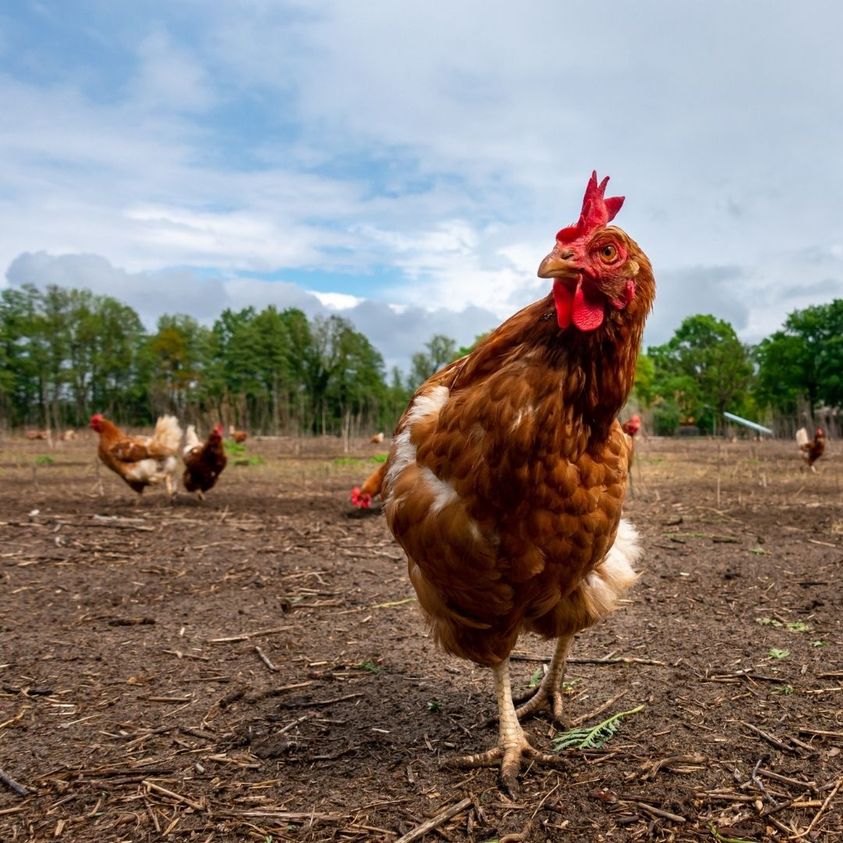Salmonellosis in Chickens
Salmonellosis in poultry is caused by Gram-negative bacteria from the genus Salmonella. There are only two species in this genus, enterica and bongori (Lin-Hui and Cheng-Hsun, 2007), but almost 2,700 serotypes (serovars), of which around 10% have been isolated from birds.
However, Salmonellosis is not the most devastating poultry disease, but it is one of the most difficult diseases (agent) to control. The main reason is the large variety of serotypes and the very complex epidemiology of this microorganism.
In addition to the large number of serotypes, the genus Salmonella exhibits extreme diversity among the serotypes in terms of their characteristics and pathogenicity. Some are more adapted to the intestine and do not go beyond the gut, while others can get into the blood stream and have the ability to colonize the liver and spleen. Some survive longer in the environment, while others are sensitive. Salmonella as a genus are able to infect multiple species, therefore cross infection of serotypes is very common.
Signs
- Dejection.
- Ruffled feathers.
- Inappetance.
- Thirst.
- Yellow diarrhea.
- Reluctance to move.
Salmonella in poultry has been divided into two groups: typhoid and paratyphoid.
The typhoid group includes two members: Salmonella Gallinarum and Salmonella Pullorum. The paratyphoid group contains all other serotypes of Salmonella.
Salmonella Gallinarum in egg production
In the case of laying chickens (eggs), the frequency of typhoid infection, mainly caused by Salmonella Gallinarum, is a lot higher worldwide when compared to that of broiler flocks. The main reason is the lack of good biosecurity. Most of the layer farms have multiple ages, which do not allow all-in-all-out management, compromising biosecurity.
Once the infection is established, it becomes impossible to eradicate, unless the whole farm is cleaned.
Parathyphoid group
This group is represented by all other serotypes of Salmonella except for the two in the typhoid group. As a general rule, paratyphoid types do not cause mortality in poultry and do not interfere with performance.
The main reason to establish a control program is to reduce or avoid human infection by consuming contaminated meat and eggs. The control strategies are a lot more complex than for the typhoid group.
Breeders and paratyphoid Salmonella control
When breeders are positive for paratyphoid Salmonella, it is important to identify the source of infection: from the grandparents or acquired on the farm. If the infection was acquired on farm, then we have to reinforce biosecurity, rodent control, cleaning and disinfection, downtime, other animal contact, visitors, repair crew, and vaccination team. Any equipment introduced into the farm has the potential of carrying Salmonella. In certain circumstances, vaccines may be used in breeders.
Hatchery and Salmonella control
Salmonella is transmitted vertically, thus breeder flocks positive for typhoid Salmonella will result in positive chicks. Proper management, cleaning, and disinfection of the hatchery all contribute to limiting lateral spread of Salmonella from positive to negative flocks
To reduce the transmission of Salmonella from positive flock to negative ones, eggs from positive flocks must be incubated and hatched separately. Therefore, a well-managed hatchery can avoid cross-contamination, but will not eliminate Salmonella from incoming eggs from a positive breeder flock. Probiotics, antimicrobials, and potentially vaccines can be delivered in the hatchery and help with overall Salmonella control.
Treatment
Amoxycillin, potentiated sulponamide, tetracyclines, fluoroquinolones.
Promois International is a Manufacturer and Global Supplier of all types of Health supplements for Poultry & Birds.
Promois International - Pharmaceutical Raw Material Powder Manufacturer, Wholesaler Supplier And Exporter
customercare@promois.ru
Follow Us on Social Media
